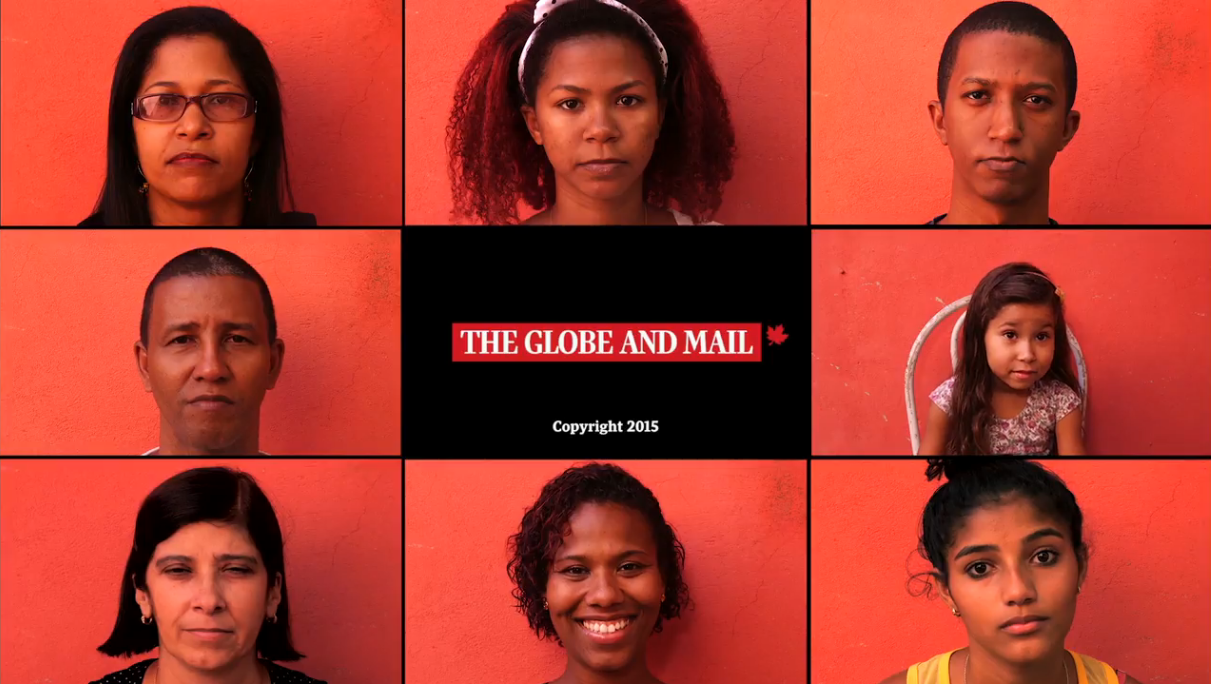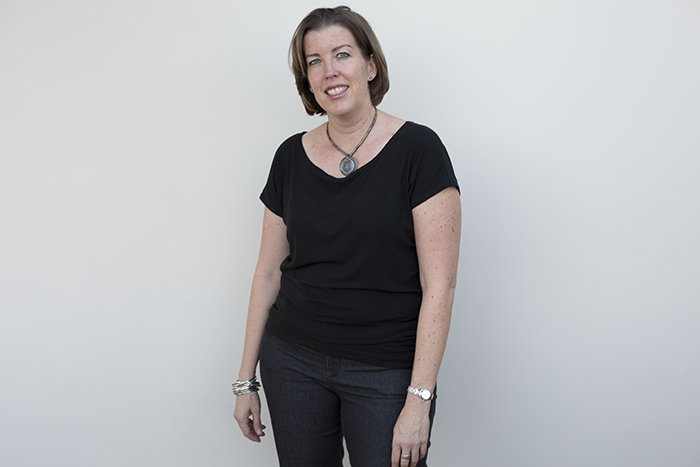When Stephanie Nolen arrived in Brazil more than two years ago as the Latin America Bureau Chief for Canadian outlet The Globe and Mail, she noticed that Brazilians didn’t talk about racial inequality. She wanted to find out why.
Her curiosity led her to pitch her editors the idea of reporting and publishing a single article on race in Brazil. Given her previous success with such large projects, The Globe said yes.
Over the course of 10 months, Nolen read books, traveled all over Brazil and interviewed hundreds of people. The result could be considered the most complete and up-to-date journalistic endeavor that tells the story of race in Brazil, exploring topics like the country’s origins of slavery, the impact it’s had on Brazilian culture and the struggle Brazilians face finding an identity in modern society.
Nolen examined the multifaceted issue by centering her story around the de Araújo family - whose members exemplify the vast variety of different “colors” that people identify with in Brazil - as well as through the prejudice that Ícaro Vidal, a black doctor in Liberdade, faces in his career.
The final project - Brazil’s Colour Bind - is more than 8,000 words, available in both English and Portuguese, and includes archival images, data, photography and video.
IJNet interviewed Nolen to find out how she reported and produced this seminal story.
1. When did you first realize that you wanted to do an article about race in Brazil?
I came to Brazil by way of six years as a correspondent in South Africa and five years in India - so, with a lot of experience reporting on countries undertaking massive efforts at social change, countries plagued by inequalities. And that made Brazil exciting: there has been undeniable, enormous change here in the last 15 years, frankly much more success at social inclusion than I saw in South Africa or India (although of course a straight comparison is difficult.)
But from my first days here, I began to wonder about racial inequality, which seemed to me like something Brazilians conspicuously weren't talking about, and an area where the same rate of change and progress wasn't occurring (as, say, with gender equality or LGBT rights), and I wanted to know why.
2. An article about race in Brazil seems like a topic that is too large for a newspaper to cover in one article. How did you convince your editors to embrace this subject and to do it in one article?
Definitely: it's too large for one article, even at 8,200 words, and too large for a bookshelf full of books. I think that in the era of Twitter we often underestimate readers. This project attempts to give a reader a good understanding of the historical roots and present-day impact of racism in an increasingly influential country, through a cast of characters - it takes a lot of words to do that. But I think we've shown consistently in our Globe and Mail foreign coverage that if you make them good words, supported by attractive design and useful graphics and other elements, then a reader absolutely will invest the time.

3. Can you describe how you reported this article? Where did you start? How many people did you interview? How many cities did you visit? How long did your reporting take?
I started by reading books (old school). There aren't a lot out there on race in Brazil. I went to the authors of the few books I found, and asked with whom they thought I should speak. I looked for historians of slavery, and museum curators (and discovered there IS no museum of slavery in Brazil). I looked for activists on racial equality, of whom there are fewer than I expected. I asked everyone I interviewed to suggest other people.
I also wanted to look at interracial families, so I found academics who look at that issue, and then we went looking for an actual family who would let us profile them, and that just took a lot of going to neighborhoods and asking people. And then we went back to spend time with them - family barbecues and afternoons on the couch and holidays; they were incredibly patient. I reported in Rio, Salvador, Sao Paulo, and Minas Gerais, but the project was always on my mind everywhere I traveled over the course of about 10 months of working on it.
4. You just wrote what many people believe to be the best article on race in Brazil of the last decade. You are a white woman from Canada. How did your own identity help or possibly hinder your reporting? What advice would you give reporters who are reporting articles about communities that they do not belong to? How did you gain access to the communities that you reported on?
First, that's incredibly high praise; thank you. Eesh, the identity question. It paralyzes me. I am indeed a white woman from Canada, now writing about racism in Brazil - as I was a white woman from Canada writing about caste in Dalit villages in India and HIV in rural Zimbabwe. On the one hand, I feel really strongly about people telling their own stories and the stories of their own communities. I'm super wary about the appropriation and misrepresentation of voice; conscious of the limits of empathy; hyperaware of my own lack of qualification to understand so many situations; aware of my privilege as a white Canadian.

And then, on the other hand, I believe in the power of journalism. I believe in showing up, in listening, in asking good questions, in trying to write as honestly as you can, in being as aware as you can be of your own biases and trying always to interrogate your assumptions, in trying to be fair.
When you bring unfamiliar eyes to a place, you see different things. And, similarly, when you come from outside - and sit down somewhere like Simone's [one of the characters in Nolen’s article] sofa - people often give you space to ask questions, or tolerate your prying, in a way they wouldn't for someone local. I asked profoundly intimate questions of Simone and her family; I wonder what that conversation would have looked like if I were Brazilian.
The simple answer about how I gain access to the communities where I report is - I ask. I show up, and I introduce myself, and I explain why I'm there as thoroughly as I can, and I ask people if they will talk with me. Almost always, they say yes, which is the great miracle of journalism.
5. Often times international reporters will use assistants to help in everyday researching and large projects like this one. What role did your assistant, Manuela Andreoni, play on this huge project? What advice would you give to other international reporters in finding and working with local assistants or fixers?
Manuela - whom I call a producer rather than an assistant - was critical to this project, from the very first day when I started musing aloud about how I didn't understand race in this country. She's amazing at convincing people to share their stories, and because my Portuguese is still a work-in-progress (and was lousy when we began this project) she had to do a lot of the front-line work of getting us in people's doors.
She had to translate a lot of incredibly intimate conversations - which is really hard work - and in that situation it's important to be working with someone who knows and gets you (so that they are precisely translating the nuance of your questions) and whom you trust - so you know you can rely on their answers. She says that it took foreign eyes to see this story as a story, but she was integral to our telling it.
6. The article is not just an article. It’s a huge digital project with video, images and charts. Once you and your editors decided to do the report, how did you and your editors start planning the digital project?
It was always conceived of as a digital project, as everything is at The Globe these days. So a digital team - of about six people if we include video - was involved from the beginning. But it only became clear as the story started to take shape (i.e., what pieces of this enormous subject would we tackle) what elements we would need - what we would tell by video, what we would tell in interactive graphics, what would be straight written narrative.
We had a meeting in about March to say, ok, this is roughly what we will need, so we could start gathering data and things like the archival slavery documents. And once I had a draft text, the genius project lead Laura Blenkinsop started putting the puzzle pieces together.
7. How did you come up with the idea for the video?
I think it's important that video on a "newspaper" website not be just a two-minute summary retelling of a giant story. I wanted there to be video only if it contributed something I couldn't do in words - and that, I decided pretty early on, would most usefully be to show the very weird (to my Canadian eyes) way that Brazilians talk, and don't talk, about race and colour - to show what those conversations actually sound like when you're in the room.
But I had no idea if it would work. Simone and her family agreed to be part of the experiment, and so we went out to their home with videographer Nadia Sussman and set up, and I just started asking people the questions - what's your race? What's your colour? What's it mean in your life? - having told Nadia and The Globe, no promises, I really don't know what will happen. And it was awesome. We all laughed until we were gasping. And Nadia cut it together in a way that I think is both fun and dignified.
The video has had a wonderful response from Brazilians who say, "You know, I never thought about it, but we DO say those things, and when you point it out, it IS odd." I think that in two minutes, that video conveys incredibly powerfully how ideas of race and color and identity jumble together in people's lives here - plus it's fun, and I think it catches people off-guard at the top of a story they're anticipating will be sober.

